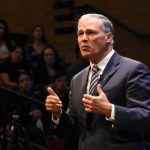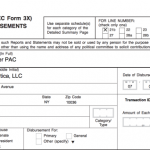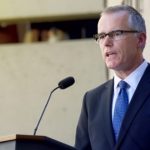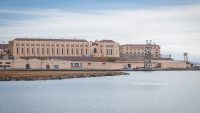Obama’s Agile Startup 18F Has Shrunk By Half Under Trump
The government IT fix-it shop 18F had a headcount of around 300 when Trump took office, and now has less than 150, according to a report from Fedscoop. The startup-like group, housed within the General Services Administration, was founded in 2014 to help government agencies use “agile” software development strategies to build more efficient operations and exert more control over their work with outside vendors.
President Obama started the office, alongside the United States Digital Service (USDS), to bring in outside brains to fix the health insurance marketplace website that marred the debut of Obamacare. Among 18F’s recent projects is a centralized portal for filing Freedom of Information Act requests.
The group, which was initially staffed largely by young, liberal-leaning Silicon Valley types—and which takes its name from its address at the GSA building, 18th and F Streets—began to dwindle after Donald Trump was elected president.
Among its big departures have been Hillary Hartley, a cofounder of 18F, who left to become chief digital officer of Ontario, and Noah Kunin, a former leader at 18F, who announced in a Medium post in July that he was stepping away from government service for political reasons. Kunin cited concerns about President Donald Trump asking for FBI director James Comey’s “loyalty” and the reorganization of GSA’s Technology Transformation Service under the Federal Acquisition Service, an organization controlled by a political appointee.
It isn’t known how much of the decline of 18F owes to people leaving for political reasons, and how much owes to a federal government unwilling or unable to hire replacement staff. The unit has also been cited for management and policy missteps—a late 2016 report from GSA’s internal watchdog says the start-up has suffered mounting losses from the beginning—and in February it was admonished by the GSA inspector general for not adhering to certain IT security protocols.
Trump campaigned on a promise of smaller government; and while some high-profile staff cuts at agencies like the State Department have made headlines, overall, the government isn’t radically smaller than it was on inauguration day. It employed 2.097 million people then, and more than a year later employs 2.088 million people, according to U.S. Office of Personnel Management numbers.
Meanwhile, despite concerns that the Trump administration might cut back on all of Obama’s “startups,” the U.S. Digital Service continues to recruit new members under the leadership of Matt Cutts, a former Googler who signed up for a three-month stint under Obama in 2016 and has stayed on since. Among the 10 modernization efforts recently underway are the General Services Administration’s single sign-on project login.gov and web tools for military veterans, like one that helps them learn how to appeal their discharge status.
In a 2015 cover story, President Obama explained to Fast Company his request to recruits from Silicon Valley: “Is there a way for us to harness this incredible set of tools you’re developing for more than just cooler games or a quicker way for my teenage daughters to send pictures to each other?”
Mikey Dickerson, who led the crew that fixed the Healthcare.gov website–and left his post as USDS administrator a few days before Trump’s inauguration–said in 2015 that he didn’t worry “a ton” about the prospect of a future administration tearing down Obama’s tech-focused efforts. “Because the things we set out for ourselves just for the next two years–I mean, if we accomplish just those things, it will be worth all the effort, even if it all goes up in smoke just after.”
Fast Company , Read Full Story
(10)














